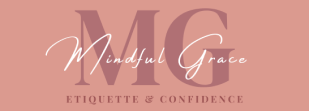FAQ:
What type of eye cream is best?
According to aesthetic doctor Dr Anna Hemming, “The best eye cream depends on your individual skin concerns, such as dark circles, puffiness, fine lines, or overall skin laxity and thinning skin. A well-formulated product should be gentle yet effective, with active ingredients tailored to the delicate skin around the eyes.
“I recommend looking for medical-grade products with evidence-based ingredients that target specific issues. My favourites are from the ZO Skin Health range: each product in their collection has a distinct function, from brightening to rejuvenation and firming.
“For example, ZO Skin Health’s Intense Eye Crème is ideal for mature or delicate skin, delivering hydration and reinforcing skin structure. For younger or preventative care, the ZO Eye Brightening Serum works well to revive tired eyes and diminish dark circles, while the Growth Factor Eye Serum is excellent for smoothing fine lines and improving skin strength.”
What is the difference between an eye cream and an eye serum?
“While both are designed for the delicate skin around the eyes, eye creams and eye serums differ in both their purpose and texture. Eye creams are thicker and contain emollients, helping to hydrate and lock in moisture, making them particularly beneficial during the day when the skin needs protection.
“Eye serums, on the other hand, are lighter and more concentrated in active ingredients, designed to penetrate deeper into the skin to target specific issues such as vascular damage, dark circles, puffiness, and collagen breakdown.
“These two types of products are complementary and can be used in combination—either applying serum at night and cream in the morning, or layering serum first followed by cream both morning and evening, depending on your skin’s needs,” says clinical facialist, Kate Kerr.
Do eye creams help reduce the appearance of fine lines and uneven texture?
“Yes, clinically formulated eye creams with active ingredients can significantly improve fine
lines, uneven texture, and thinning skin. Targeting fine lines and uneven texture especially
when they’re formulated with proven actives like peptides, growth factors, and retinol
alternatives. Eye creams work to smooth the skin, improve collagen stimulation, and
reinforce skin integrity.” – Dr Anna Hemming.
Are eye creams worth it?
They definitely are according to Dr Dendy, who advises to always look at eye creams before moving to advanced treatments like injectables. And the expert reveals that the under eye area is also one of the first to show signs of ageing (just like your hands, sigh).
“You’re never too young for eye cream, because we know it’s going to be the first area to show crepiness, fine lines and wrinkles,” she says. In short, an eye cream is not going to do you a disservice.
What eye cream ingredients are best for dark circles?
“The right ingredients depend on the underlying cause of your dark circles. If pigmentation is the issue, it’s essential to regulate melanin production using tyrosinase inhibitors—vitamin C, kojic acid, niacinamide, and retinol are particularly effective for this.
“If the darkness stems from leaky blood vessels and poor circulation, which creates a blue or purple hue, ingredients such as caffeine, vitamin C, and vitamin K help strengthen capillaries and boost microcirculation.” – Kate Kerr.
What is the best eye cream for mature skin?
Mature skin can be more on the dry side, with concerns including age spots and fine lines and wrinkles. Choose an eye cream with retinol, plumping peptides, depuffing caffeine, brightening vitamin C, and hydrating and moisturising ingredients like hyaluronic acid, glycerin and squalane.
The Paula’s Choice Clinical Ceramide Eye Cream contains vitamin C, retinol, five different ceramides and glycerin, while the Dermalogica Age Reversal Eye Complex stars microencapsulated retinol (which protects the retinol from dissipating after application) vitamin C, peptides and brightening niacinamide.
Which is better, an eye gel or an eye cream?
With so many eye creams out there, it can be tricky choosing which texture works well for your skin type. That’s why we asked a skin expert to make those decisions that little bit easier. Kate Kerr says: “It ultimately depends on what you’re trying to achieve. Gels tend to have a cooling, refreshing effect and are quickly absorbed, making them ideal for targeting puffiness and tired eyes. Creams, with their richer texture are better suited for hydrating and nourishing the skin, particularly if dryness is a concern.
“Personally, I prefer serums or light creams over both, because they often combine multiple active ingredients in a highly absorbable format targeting several concerns simultaneously and reaching deeper layers of the skin.”
How to apply eye cream
As well as under the eyes, Dr Dendy recommends applying on the brow bone and down to the crease. As for where to avoid? “If you put eye cream on your lash line, it’s going to transfer into your eye while you sleep, which is irritating, and might mean you’ll rub and scratch it,” says Dr Dendy.


